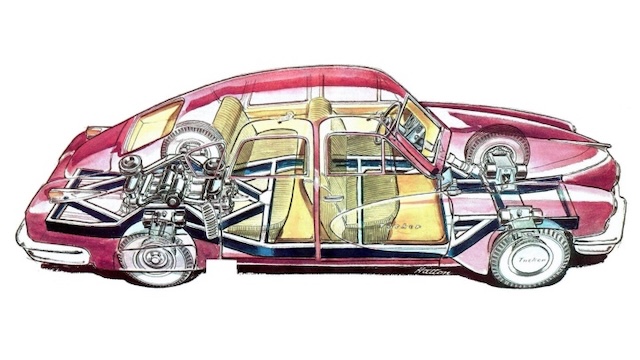In the annals of automotive innovation, few stories are as captivating as the rise and fall of the Tucker Torpedo. Officially known as the Tucker 48, this revolutionary vehicle was the brainchild of Preston Tucker, a visionary entrepreneur who dared to challenge the norms of the mid-20th-century auto industry. Though the car’s production was short-lived, its groundbreaking features and ambitious design left an enduring mark on the automotive world.
Let’s take a closer look at the remarkable story of the Tucker Torpedo, exploring its innovative features, the challenges it faced, and its lasting legacy.
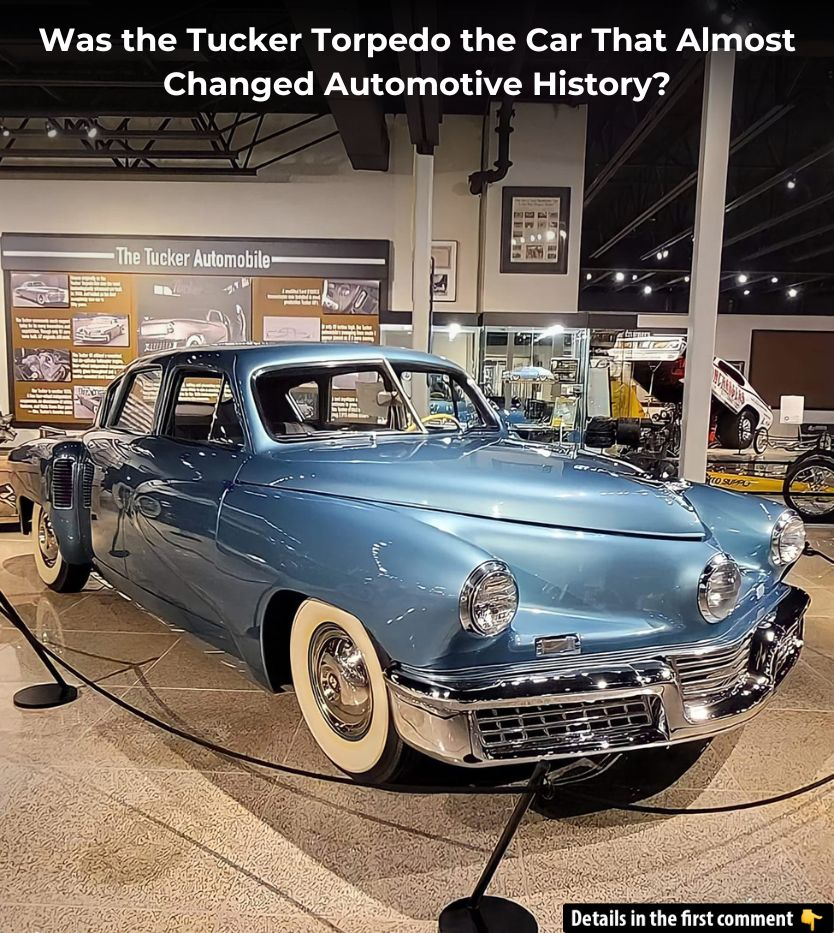
Preston Tucker: The Man Behind the Vision
Preston Tucker was no ordinary entrepreneur. Born in 1903 in Michigan, Tucker was a natural innovator with a passion for automobiles. After years of working in various roles within the automotive industry, Tucker decided to pursue his bold vision of creating a car that would redefine the way people thought about safety, performance, and design.
In 1946, as the world recovered from World War II, Tucker seized the opportunity to bring his dream to life. The post-war automotive market was ripe for innovation, and Tucker envisioned a car that would combine cutting-edge technology with unparalleled safety features. His dream car would later become known as the Tucker 48—or, as it was popularly dubbed, the Tucker Torpedo.
Revolutionary Features of the Tucker Torpedo
The Tucker Torpedo was not just another car; it was a technological marvel that was years ahead of its time. Tucker sought to design a vehicle that prioritized both safety and performance, incorporating features that were virtually unheard of in the 1940s.
Here are some of the standout innovations of the Tucker Torpedo:
- Cyclops Eye Headlight: One of the car’s most iconic features was a third, central headlight that rotated in conjunction with the steering wheel. This “Cyclops Eye” provided improved visibility around corners, an innovation that modern adaptive headlights echo today.
- Pop-Out Windshield: In the event of a collision, the windshield was designed to pop out, reducing the risk of injury to passengers.
- Rear-Mounted Engine: The car featured a rear-mounted engine for better weight distribution and improved handling, a design choice that was uncommon at the time.
- Disc Brakes: Decades ahead of its time, the Tucker Torpedo incorporated disc brakes for enhanced stopping power.
- Padded Dashboard: To improve safety, Tucker included a padded dashboard to minimize injuries during accidents.
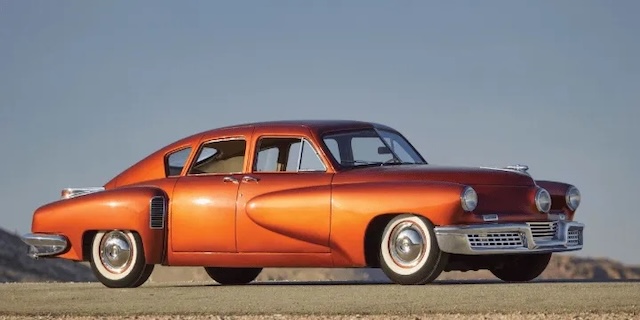
The legendary Tucker Torpedo car
These features were not just forward-thinking—they were revolutionary, setting the Tucker Torpedo apart from every other car on the market.
The Tucker Torpedo’s Rocky Debut
The Tucker Torpedo made its highly anticipated debut on June 19, 1947, at a grand event in Chicago. Tucker’s vision for the car generated immense public interest, and over 3,000 people gathered to witness the unveiling.
However, the debut did not go as smoothly as planned. The prototype faced several technical issues, including broken suspension arms and a loud, problematic engine that required external power to start. Despite these setbacks, Tucker’s charisma and showmanship kept the audience captivated. He instructed the band to play louder to drown out the engine noise and managed to turn a potential disaster into a moment of intrigue.
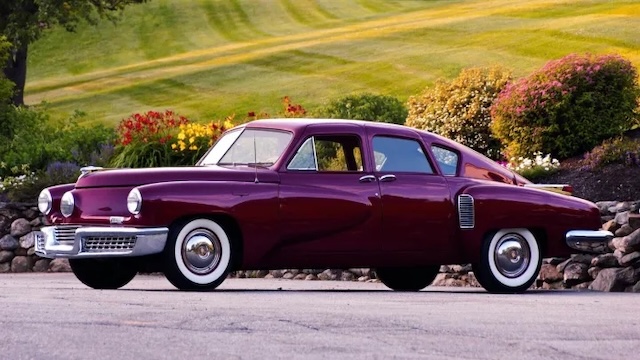
A car model closely associated with industrialist Preston Tucker
Although the prototype’s flaws were evident, the innovative design and futuristic features of the Tucker Torpedo left a lasting impression on attendees.
Battling the Giants: Challenges Tucker Faced
Tucker’s ambitious project faced significant resistance from multiple fronts. The established automotive giants—General Motors, Ford, and Chrysler—dominated the industry and viewed Tucker as a potential disruptor. Competing against these “Big Three” was no small feat, especially for a newcomer.
Beyond industry competition, Tucker encountered financial difficulties and intense scrutiny from the media and government. The Securities and Exchange Commission (SEC) launched an investigation into Tucker’s company, alleging fraudulent practices in the sale of stock. While Tucker was eventually acquitted of all charges, the negative press and legal battles irreparably damaged his company’s reputation.
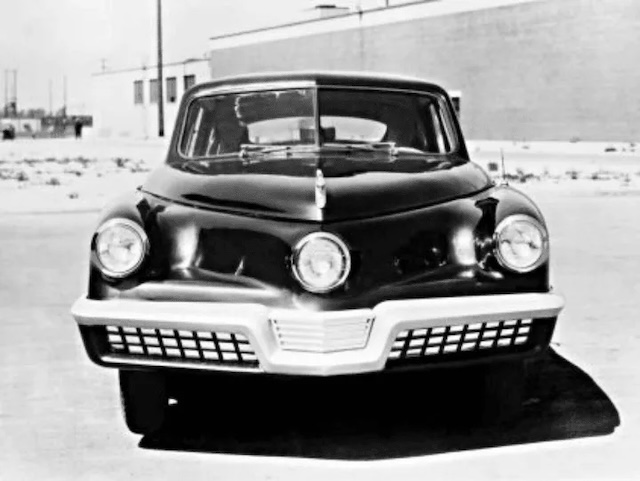
The front view of the legendary car
The mounting financial and legal pressures proved insurmountable. By 1949, just two years after its debut, the Tucker Corporation declared bankruptcy, bringing an end to Tucker’s dream of revolutionizing the automotive industry.
The Limited Legacy: Only 51 Cars Produced
Despite Tucker’s ambitious plans, only 51 Tucker Torpedos were ever built, including the prototype. Each car became a rare collector’s item, with surviving models now considered highly valuable pieces of automotive history.
The limited production meant that the Tucker Torpedo never reached the mass market, but its impact on the industry was undeniable. The car’s innovative features inspired future advancements in safety and design, solidifying its place as a symbol of innovation.
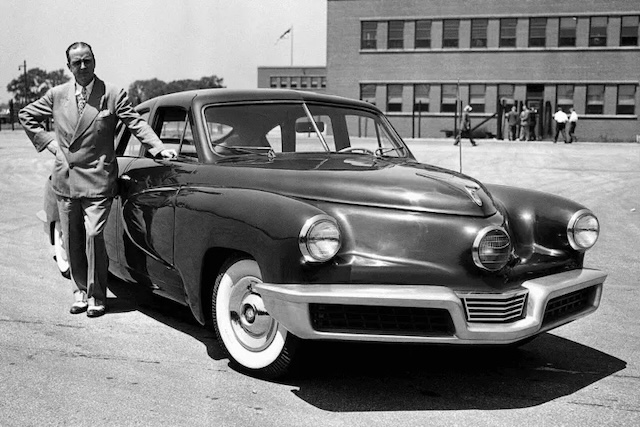
The car model alongside its ‘creator.’
The “What Ifs” of the Tucker Torpedo
The story of the Tucker Torpedo is often framed as a tale of unfulfilled potential. What if Preston Tucker had succeeded in bringing his vision to fruition? Would the automotive industry have adopted safety features like disc brakes and pop-out windshields decades earlier?
The Tucker Torpedo represents a tantalizing “what if” in automotive history. Its groundbreaking innovations could have reshaped the industry, challenging established norms and accelerating the adoption of advanced technologies.
Why the Tucker Torpedo Still Matters Today
Even though the Tucker Torpedo never achieved commercial success, its legacy endures. The car is a testament to the power of innovation and the courage to challenge the status quo. Tucker’s story resonates with entrepreneurs, dreamers, and innovators who dare to think differently.
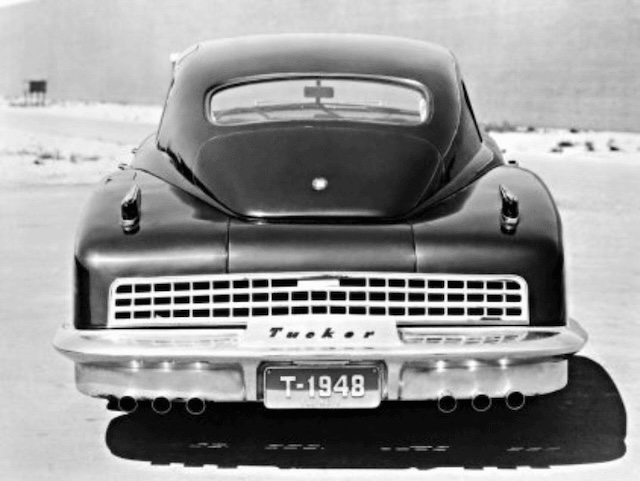
And here is the rear view
Today, the remaining Tucker Torpedos are treasured by collectors and displayed in museums as symbols of ambition and ingenuity. They serve as reminders of what is possible when vision and creativity collide, even in the face of overwhelming odds.
Conclusion: A Vision That Lives On
The Tucker Torpedo may not have changed the automotive industry in the way Preston Tucker envisioned, but its legacy is undeniable. It represents the daring spirit of innovation and the determination to push boundaries, even against formidable opposition.
Though only 51 cars were ever produced, the Tucker Torpedo continues to inspire admiration and curiosity, standing as a symbol of what could have been. Preston Tucker’s dream lives on—not just in the surviving cars, but in the ideas and advancements he brought to life.
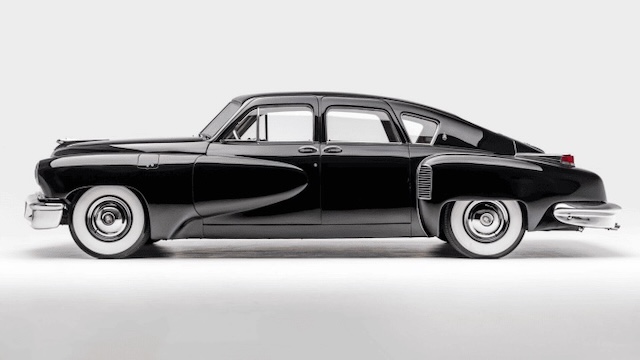
The Tucker Torpedo Model 48 4-door viewed from the side
The Tucker Torpedo reminds us that great innovation often comes with great risk, but its impact can be felt long after the dream ends. In the world of automotive history, the Tucker Torpedo remains a shining example of vision, ambition, and the relentless pursuit of progress.
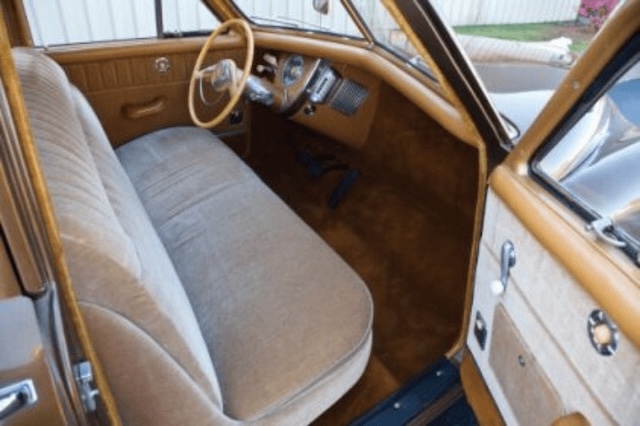
The luxurious interior of the car
